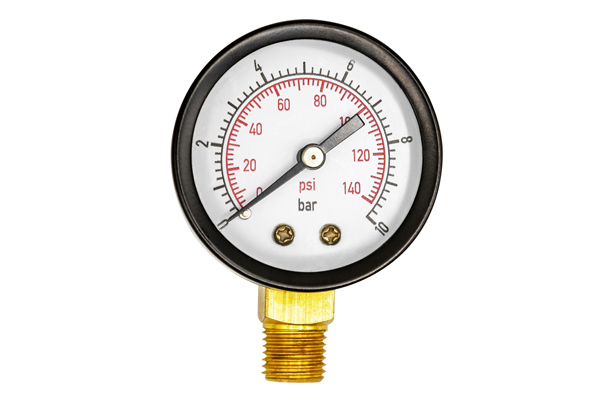Table of Contents
When the chill of winter becomes too much to handle, many of us resort to layering up and sipping warm drinks, yet these solutions often fall short of providing true comfort. In most households, the reliance on a heating system is paramount to maintaining a cozy environment throughout these colder months. Particularly for those systems fueled by propane, an outdoor tank on the property is a common sight. It’s vital for homeowners to regularly monitor this tank to prevent running out of fuel unexpectedly. An empty propane tank means a non-functional heater, plunging indoor temperatures, and a cold, uncomfortable living space. This scenario is certainly avoidable. In the following sections, we will explore how to tell if home propane tank is empty.
How To Tell If Home Propane Tank Is Empty
Familiarizing yourself with your heating system, particularly the propane tank, is crucial for hassle-free operation over the years. Understanding how to gauge the propane tank level is key to avoiding the inconvenience of an unexpected empty tank. The tank’s solid, non-transparent walls mean a casual visual inspection isn’t sufficient. Nevertheless, you can employ several straightforward methods to assess the fuel level at any given time accurately. Here are some practical tips to keep track of their propane tank’s contents:
Utilizing a Propane Tank Gauge

Most propane tanks have integrated mechanisms designed to measure the fuel level. This gauge provides an accurate reading of the current propane volume. Regularly monitoring this gauge is essential. If your tank isn’t equipped with a gauge, consider purchasing an aftermarket one and have it professionally installed.
The gauge’s dial displays the percentage of the tank filled with propane. To determine the actual volume, multiply this percentage by the tank’s total capacity. For instance, a reading of 60% on a 400-gallon tank indicates you have around 240 gallons remaining. Check the gauge weekly, as this will help estimate how long your current propane supply will last.
The Warm Water and Cool Hand Technique
Precise measurements are not always critical. If your gauge is inaccessible or malfunctioning, you can still estimate the propane level in your tank using a simple temperature-based method. Pour warm water over the tank and then feel along its surface with your hand. You’ll notice a distinct temperature difference between the empty space in the tank and where the liquid propane begins.
The point on the tank’s surface where it starts to feel cooler to the touch indicates the top level of your propane. As time goes by, this level will decrease. Schedule your next propane delivery well before this level drops too low.
Basic Mathematical Estimations
For those comfortable with numerical calculations, precise estimations of your propane level can be achieved through basic math. Begin by determining your propane tank’s volume. If the capacity is listed in pounds, divide the weight by 4.2 to convert it to gallons. Next, calculate your heating system’s consumption rate, measured in BTUs (British Thermal Units) per hour. A BTU quantifies the energy necessary to heat one pound of water by a single degree Fahrenheit, making it an effective metric for gauging the heat content of different fuels and energy sources.
Each gallon of propane generates approximately 91,452 BTUs of thermal energy. Locate the BTU rating on your heater’s label and divide it by 91,452 to determine its hourly propane consumption. For example, a heater with a 30,000 BTU rating uses about 0.328 gallons of propane per hour, translating to 7.87 gallons daily or 236.19 gallons monthly. In contrast, a larger system rated at 50,000 BTUs would consume approximately 0.547 gallons per hour, equating to 13.12 gallons daily and 393.65 gallons monthly.
These figures are based on continuous operation and assume the heating system is brand new. Remember, the efficiency of a heating system decreases over time. Keep this in mind for accurate estimates. Understanding these consumption rates can help you effectively gauge how long your current propane supply will last.
Why Schedule Propane Deliveries at 30% Capacity
It’s crucial not to delay your propane refill until your tank is completely empty. Propane professionals advise arranging for a fuel delivery when your tank reaches about 30% capacity. This precautionary measure protects against unforeseen delays, such as supply chain disruptions, traffic, limited fleet availability, or adverse weather conditions. It’s a strategy that underscores the principle of ‘better safe than sorry.’
Weather unpredictability is another key factor to consider. If temperatures suddenly drop, your fuel consumption can increase substantially. What might have been sufficient for a week could dwindle to just a few days’ worth of heat. It’s wise not to wait until your tank is critically low. Scheduling a refill when your tank is at 30% capacity is a reliable guideline.
Before proceeding with a propane refill, it’s crucial to inspect your tank for any signs of a leak. Addressing potential leaks is crucial to prevent risks such as fires and unnecessary fuel waste. Contact professionals immediately for a thorough inspection, clean-up, and necessary repairs.
Why You Should Avoid Running Out Of Propane

Proper propane tank management is essential to avoid disruptions.
- Propane Appliance Shutdown: When your propane supply runs out, all related appliances cease functioning. This includes your heater stopping and leaving your home cold. Moreover, your propane stove becomes unusable for cooking, and your propane water heater cannot provide hot showers.
- Propane Tank Rust: Depleting propane allows humid air to fill the tank, leading to internal rust. This corrosion gradually weakens the tank’s walls, increasing the risk of leaks. Furthermore, rust can obscure the distinct odor of propane, potentially delaying leak detection. This issue can escalate unnoticed.
- Property Damage: Adequate heat from your propane heating system is essential for family comfort and property protection. It helps prevent pipes from freezing and subsequently bursting, an issue that can lead to expensive repair costs.
Conclusion
Allowing your propane tank to empty poses hazardous, expensive, and disruptive risks. To avoid these pitfalls, it’s vital to regularly check your tank’s levels, especially during the colder months. Employ the methods outlined earlier to accurately gauge your propane supply and schedule refills when the tank is about 30% full. This proactive approach ensures a hassle-free and safe experience with your propane heating system.

If you’re in need of fast and reliable propane delivery services within Maine and New Hampshire, Lake Region Energy is the name to trust. We pride ourselves on delivering superior quality fuel swiftly, affordably, and with a smile.
Consistently, Lake Region Energy has been the go-to choice for unmatched services. Call today to explore our varied delivery schedules and financing solutions.
Furthermore, we provide a comprehensive range of HVAC services to elevate your home’s comfort, improve indoor air quality, and enhance energy efficiency. Our offerings encompass heating and cooling system tune-ups, top-tier repairs, state-of-the-art installations, and more.
For more information about our propane deliveries and HVAC services, be sure to contact Lake Region Energy. You can click here to contact us, or you can call us at (207) 839-5500 to find out more. We offer a full line of heating and cooling repairs, maintenance services, and installations.
Related Articles:
